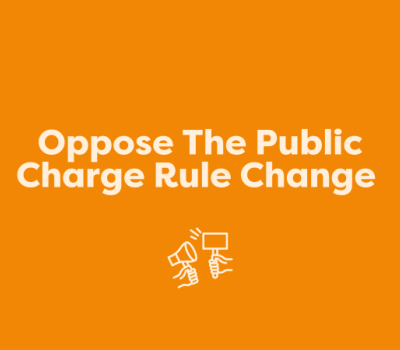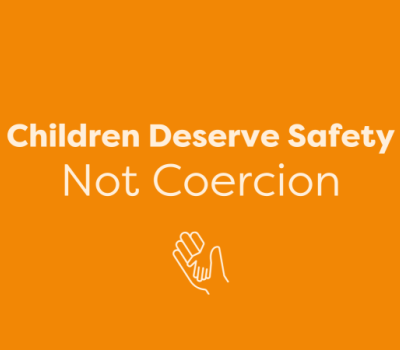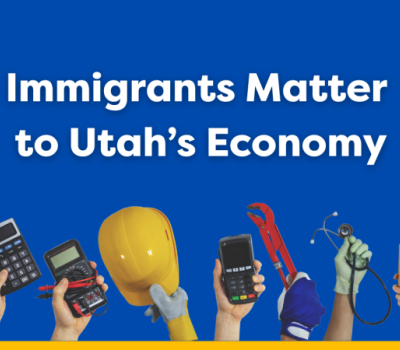The Trump Administration has already begun an unprecedented intensity of enforcement actions aimed at removing immigrants from their communities, their workplace, and often from their families. In many cases this may result in deportations, in many others it may mean indefinite incarceration in detention centers. The new administration is also promising to radically reduce the number of new immigrants allowed into the country, and to strip some immigrants of status and work authorization they currently hold.
The immigrants most vulnerable are those who are undocumented. But the impact does not end there.
People who have temporary visas may see their visas terminated or not renewed. People with temporary protected status, asylum seekers, DACA recipients, and many others are also in a precarious position.
There are far-reaching social and humanitarian implications of this type of enforcement regime. But there is also an economic risk that can be quantified.
Key Findings
There are 304,000 immigrants in Utah, including 175,000 who are non-citizens, and among those, an estimated 110,000 who are undocumented.[i]
In 2022, undocumented people paid $235,100,000 in Utah state and local taxes.[ii] If ten percent of undocumented people are deported, state and local tax revenues would be lost by $23,510,000 per year.
Immigrants, including those without documentation, are an important part of Utah’s economy. Detention and deportation of these workers would dramatically decrease affordability and availability of important goods and services.
- Farming: Over half of all crop workers in the United States are immigrants, and the vast majority of these immigrants are either undocumented or seasonal H-2A workers.[iii]
- Restaurants: Nationwide, 7 percent of people working in the leisure and hospitality industry are undocumented.[iv]In Utah, immigrants in general, both documented and undocumented, make up 26 percent of the 24,000 cooks in the state, and many are likely at risk of deportation.[v]
- Personal, home and office: Nationwide, 11 percent of janitors, 18 percent of landscaping workers, 13 percent of nail technicians, and 16 percent of dry cleaning and laundry workers are undocumented. These workers, though often underrecognized, are part of our everyday lives. In Utah, there are 6,000 janitors who are immigrants (both documented and undocumented), 4,000 landscaping workers, 2,000 nail technicians, and 5,000 maids and housekeepers.
- Construction: Nationally, 13 percent of all construction workers are undocumented. There are an estimated 24,000 immigrants who work in the construction in Utah.
David Dyssegaard Kallick is director of Immigration Research Initiative
Shamier Settle is a senior policy analyst at Immigration Research Initiative.
Ciriac Alvarez Valle is a senior policy analyst at Voices for Utah Children
[i] The authors would like to extend their thanks to Emily Eisner, Andrew Perry, and Nathan Gusdorf of the Fiscal Policy Institute, who with David Dyssegaard Kallick co-authored the report in New York State that was jointly published by the Fiscal Policy Institute and Immigration Research Initiative. For the number of immigrants, non-citizen immigrants, and estimate of immigrants who are undocumented, see the Immigration Research Initiative fact sheet, “50 States: Immigrants by Number and Share.” Number of immigrants and non-citizen immigrants are an IRI analysis of the 2023 ACS. Number of immigrants who are undocumented is estimated by the Pew Research Center based on the 2022 ACS. The fact sheet gives parallel estimates from the Center for Migration Studies (2022 ACS) and from the Migration Policy Institute (2019 5-year data).
[ii] Davis, et al. “Tax Payments by Undocumented Immigrants,” Institute on Taxation and Economic Policy, July 30, 2024. https://itep.org/undocumented-immigrants-taxes-2024/
[iii] Gutiérrez-Li, Alejandro. “Feeding America: How Immigrants Sustain US Agriculture,” Baker Institute for Public Policy, July 19, 2024. https://www.bakerinstitute.org/research/feeding-america-how-immigrants-sustain-us-agriculture
[iv] National estimates of the number of undocumented workers were provided to IRI by Jeff Passel of the Pew Research Center, and are based on an analysis of the 2022 American Community Survey, consistent with the analysis in “What We Know About Unauthorized Immigrants in the U.S.,” Pew Research Center, July 22, 2024..
[v] State-level data about of all immigrants, documented and undocumented, is from Immigration Research Initiative analysis of the 2022 American Community Survey 5-year data.












